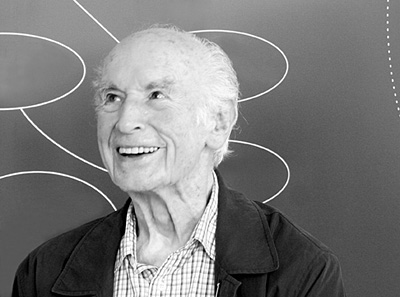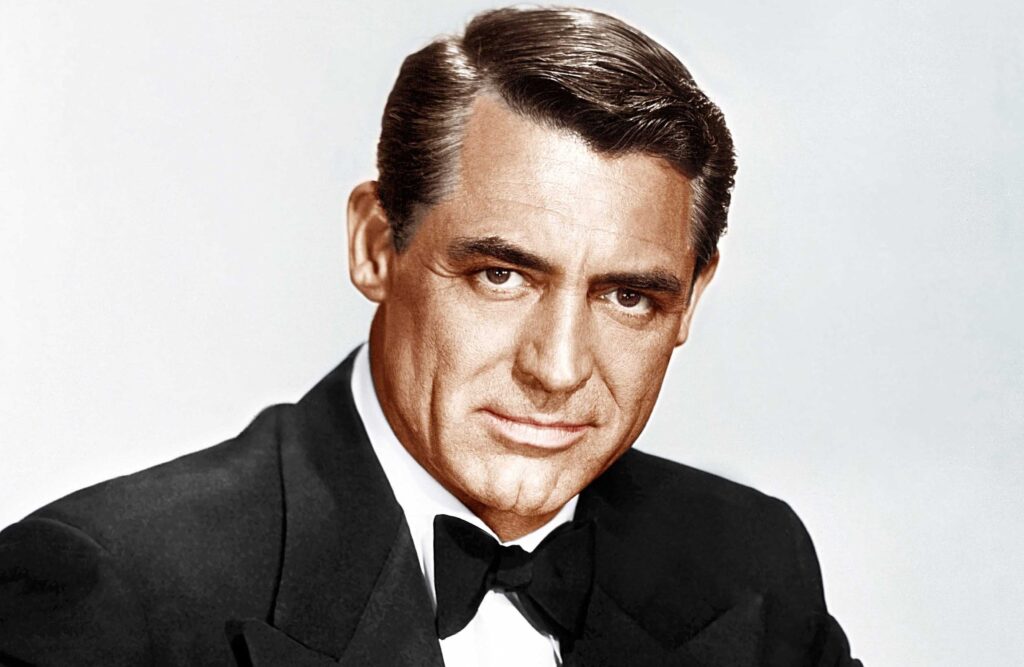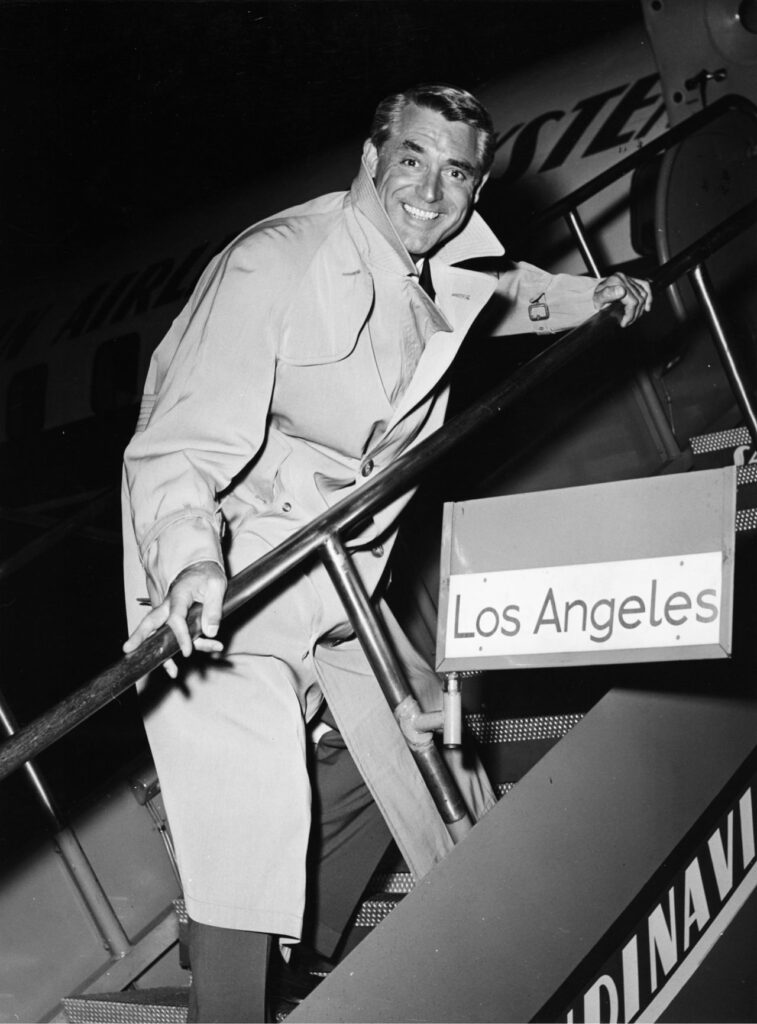When we think of the distinguished British actor Cary Grant, one of the most poised and debonair film stars in cinematic history, we don’t automatically associate him with a drug like LSD. But maybe we should.
Though it’s not uncommon for a movie star to have a troubled or even traumatic past that leads to alcohol or drug use, a “hip” psychedelic drug like LSD is easier to equate with an overt counter-culturist like Timothy Leary than a seeming conservative like Cary Grant.
Yet, Grant reportedly dropped “acid” 100 times between 1958 and 1961–and did become an even greater advocate of LSD than Leary.
Albert Hofmann and the First “Acid Trip”
LSD, or lysergic acid diethylamide, was discovered in 1938 quite accidentally by Swiss chemist Albert Hofmann while experimenting with ergot, a fungus that grows naturally on rye and related grains (and often blamed for the Salem “witch craze” of the 17th Century). But it was another five years before Hofmann discovered the drug’s hallucinogenic effects after unintentionally ingesting a small portion of the compound.

On April 19, 1943, Hofmann took a larger dose of the psychedelic drug and experienced the world’s first deliberate “acid trip.” And while the effects, which he described as “extraordinary shapes with intense, kaleidoscopic play of colors,” were quite fascinating, no practical application immediately came to mind.
That was until almost a decade later when the CIA launched Project MK-Ultra and began experimenting with the drug Hofmann referred to as “medicine for the soul.”
The CIA and Project MK-Ultra
Commonly referred to as the CIA’s “mind-control program,” the Central Intelligence Agency began experimenting with LSD and other psychotropic drugs, believing they could be used in psychological warfare as weapons of truth-seeking and brainwashing.
Throughout the 1950s and 1960s, the CIA conducted dozens of LSD experiments involving volunteers and unwitting subjects at dozens of pharmaceutical companies, laboratories, universities, and medical facilities.
Sometimes used in conjunction with hypnosis, shock therapy, and interrogation methods, LSD ultimately proved too unpredictable in practical use. But by then, the scientific community had begun exploring a therapeutic application for the hallucinogen.
Beverly Hills physician Mortimer Hartman was one of the most prominent advocates of using the drug for psychological therapy.
Hartman and the Hollywood In-Crowd
A medical radiologist by profession, Dr. Mortimer Hartman, decided to partner with psychiatrist Arthur Chandler to open a practice in Beverly Hills, California featuring LSD therapy.
Hartman had himself taken dozens of LSD “trips” in the company of fellow physicians and therapists and believed the drug could be effective in treating whatever psychological issues ailed the Hollywood elite.
Hartman petitioned Sandoz Laboratories, the drug’s Swiss manufacturer (the same pharmaceutical company that had employed chemist Albert Hofmann, discoverer of the drug) for direct access to the substance, ostensibly to treat what he termed “garden variety neurotics.”
When Sandoz Labs agreed to supply Hofmann with the drug (which was still legal in the US at the time), he effectively became the drug dealer to the stars. His clientele list included none other than film star Cary Grant.
A Bona Fide Hollywood Star
By 1958, Grant had starred in dozens of films, taking on a broad range of roles that made him one of the most popular leading men of the era.
Deemed a bona fide Hollywood “star” by 1940, by the mid-late 50s, Grant had reached a new career peak, making many of the films he is remembered for today, including “An Affair to Remember,” and two Hitchcock classics, “To Catch a Thief” and “North by Northwest.”

But Grant was anything but happy; the darker side he’d suppressed most of his life was surfacing more and more often and interfering with both his personal and professional life.
Coincidentally, Grant’s third wife, actress Betsy Drake, was receiving LSD treatments from Dr. Hartman (like many other Hollywood insiders) with good results, so she introduced Grant to him.
In 1959, at the age of 55, Cary Grant took the first of more than 100 LSD-25 doses he would take over the next three years.
Looking Inward
Grant had already concluded that something from his distant past weighed on his subconscious, making it impossible to sustain a relationship with a woman for more than a few years.
He was encouraged by Hartman’s explanation that LSD is “a psychic energizer which empties the subconscious and intensifies emotion and memory a hundred times.”
Grant was on his third marriage and had countless short-term relationships—both while married and single. But, even now, his marriage to Drake was on the verge of collapse. Grant hoped LSD would help him confront the dark side that controlled him and bring him the happiness he lacked.
Grant’s Traumatic Past
Born Archibald Leach on January 18, 1904, in Bristol, England, to working-class parents, Grant lived a relatively normal childhood until age 11 when he came home from school one day to discover that his mother was gone—without warning. He was told that she had gone on holiday and would soon return, but her abrupt disappearance would remain unexplained for the next 19 years.
Compounding the trauma of his mother’s disappearance, “Archie’s” father abandoned him a short time later to start a new family without him, leaving him to be raised by his emotionally indifferent grandparents.
It wasn’t until 1934, when Grant was already a Hollywood up-and-coming star, that he learned the truth: that his father had committed his mother to Bristol Lunatic Asylum, where she remained until the 30-year-old Grant had her released and began taking care of her.
However, by the time the two were reunited, their emotional wounds were much too deep to rekindle the close mother-son relationship they’d once had. His mother’s inability to relate to him only served to remind him of the love he’d been deprived of for nearly 20 years.
Intensive LSD Therapy
Between 1958 and 1961, Grant reportedly took over 100 five-hour, 100mcg-dose LSD “trips” under the supervision of Dr. Mortimer Hartman. Just weeks after beginning treatment, Grant reported emotional breakthroughs he likened to epiphanies.
Grant said in interviews given at the time, “When I broke through, I felt an immeasurably beneficial cleansing of so many needless fears and guilts. I lost all the tension that I’d been crippling myself with.”
When questioned about his series of failed marriages, Grant shared, “I was hurting my mother through my relationships with other women. I was punishing them for what she had done to me.”
By all accounts, Grant was extremely pleased with the results of his journeys into his subconscious, describing them as “beneficial cleansing.”

In his memoir, Cary Grant: A Biography, he said that he believed his therapy resolved years of issues around “searching for peace of mind,” stating that LSD therapy helped him reconcile his years of hiding behind his film star image and that he was finally “truly, deeply, and honestly happy.”
Grant wrote, “The protection of that façade was both an advantage and a disadvantage; an advantage because it brought me enormous success, a disadvantage for how it limited me in my personal relationships.”
Grant said LSD also helped him discover the inner strength needed to resolve his once-debilitating resentment of his parents. “Use your love to exhaust your hate,” he wrote. “The result of it all is rebirth.”
Acid Advocate
In 1959 at the peak of his fame and popularity, Cary Grant became the proverbial poster child for therapeutic LSD use, sharing his insight into the drug in a 1960 Look magazine interview that sent shock-waves across the country.
The following year he approached Good Housekeeping magazine, saying he wanted to tell the world about his experience. That the drug had changed his life and that everyone should try it.
In the resulting article, Grant was praised for “courageously permitting himself to be one of the subjects of a psychiatric experiment that eventually may become an important tool in psychotherapy.”
For years to follow, Grant continued to extol the virtues of LSD therapy—to anyone who’d show an interest. He welcomed opportunities to be interviewed for magazine articles that spotlighted him as the primary advocate of what many Americans still considered an alternative or fringe form of mental-health therapy.
Was Grant’s Faith in LSD Misplaced?
Although LSD therapy may well have freed Grant from the childhood trauma that controlled him for most of his life, it may also have been the very thing that prevented him from finding the true love he craved in later years.
According to Grant’s fourth wife, actress Dyan Cannon, to whom he was married for a brief three years, Cary was an “apostle of LSD” who tried to force her into trying LSD.
Even so, their relationship produced his only child, a daughter named Jennifer. And by all accounts, he was a loving father who spent as much time with her as the divorce agreement permitted.
Grant married once more in 1981 at the age of 77 to 30-year-old American Actress Barbara Harris—and remained with her until his passing in 1986.
Grant told friends that he’d never been happier in his life, prompting them to believe he’d finally been able to apply the insights he’d discovered through LSD therapy. But nothing indicates that his issues with women were ever truly resolved.
Sources
Vulture, “Inside the 1950s LSD Therapy That Changed Cary Grant’s Life,” Cary Grant’s LSD Therapy: The Inside Story (vulture.com)
Town & Country, “The Shocking True Story of Cary Grant’s Experiments with LSD,” The Shocking True Story of Cary Grant’s Experiments with LSD (townandcountrymag.com)

